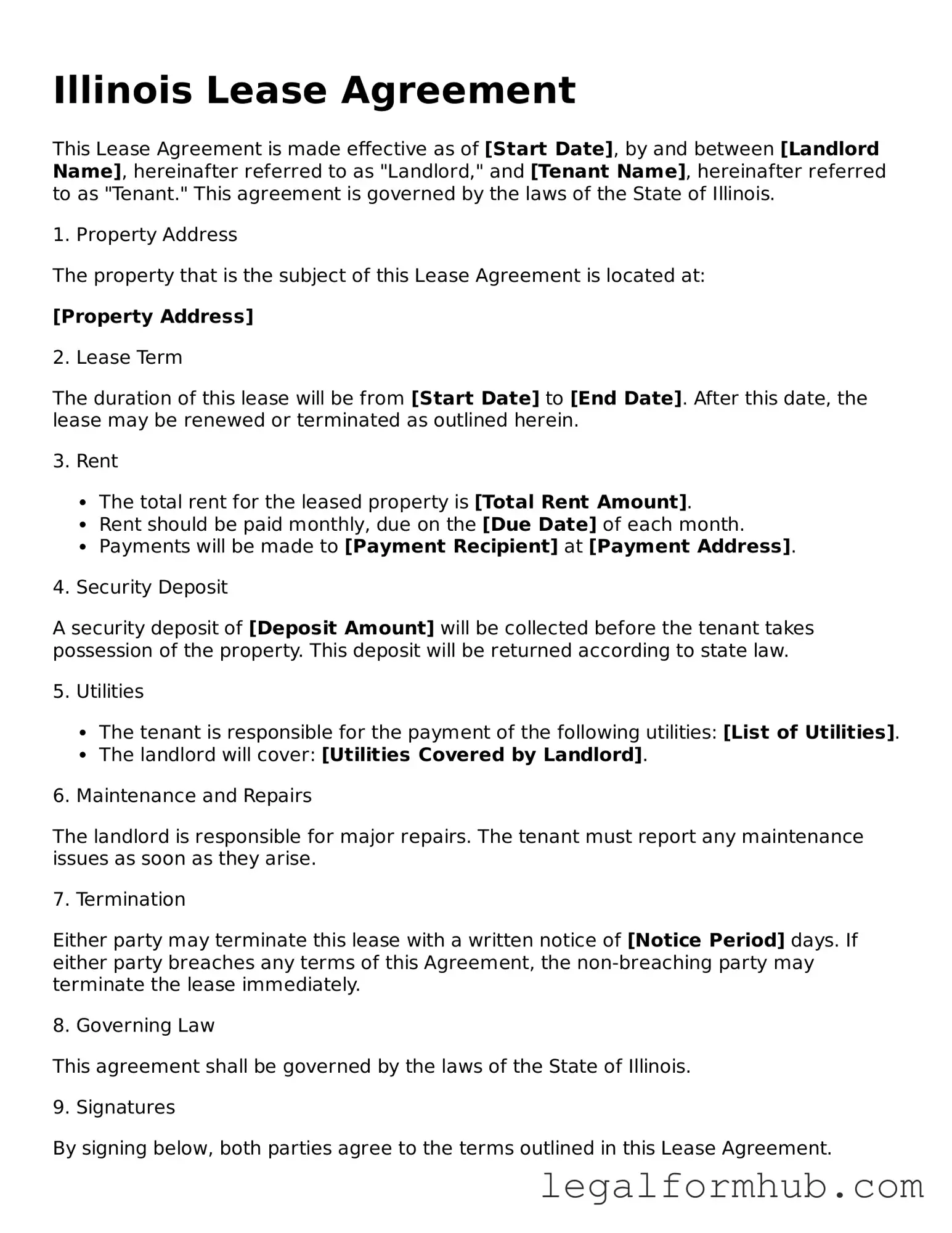The Illinois Lease Agreement is similar to a Rental Agreement. Both documents outline the terms under which a tenant can occupy a property. They specify the duration of the tenancy, the amount of rent, and the responsibilities of both the landlord and the tenant. While a lease typically covers a longer term, often a year, a rental agreement may be more short-term, sometimes month-to-month. Despite these differences, both documents serve to protect the rights of both parties and ensure clarity in the rental arrangement.
Another document that shares similarities with the Illinois Lease Agreement is the Commercial Lease Agreement. This type of lease is specifically designed for businesses renting commercial spaces. Like the Illinois Lease Agreement, it details the rental terms, including payment schedules and maintenance responsibilities. However, commercial leases often include additional provisions related to business operations, such as zoning regulations and permitted uses of the property. Both agreements aim to create a clear understanding between the landlord and tenant to prevent disputes.
The Illinois Lease Agreement also resembles a Sublease Agreement. In a sublease, a tenant (the sublessor) rents out a portion or the entirety of their leased space to another individual (the sublessee). Like the primary lease, a sublease outlines the terms of occupancy, rent, and responsibilities. However, the original tenant remains responsible to the landlord, meaning they must ensure the sublessee adheres to the original lease terms. Both agreements help clarify the relationship between the parties involved and protect their rights.
For those looking to document their vehicle transaction, consider the important Motor Vehicle Bill of Sale form, which helps ensure a smooth transfer process. You can learn more about it by visiting the page dedicated to the motor vehicle bill of sale requirements.
Lastly, the Illinois Lease Agreement can be compared to a Month-to-Month Rental Agreement. This type of agreement allows for more flexibility than a traditional lease. Both documents specify the terms of the rental, including rent and maintenance obligations. However, a month-to-month agreement can be terminated with relatively short notice, usually 30 days. This flexibility can be beneficial for both landlords and tenants who may need to adjust their living situations more frequently. Both documents aim to provide a clear framework for the rental relationship.
